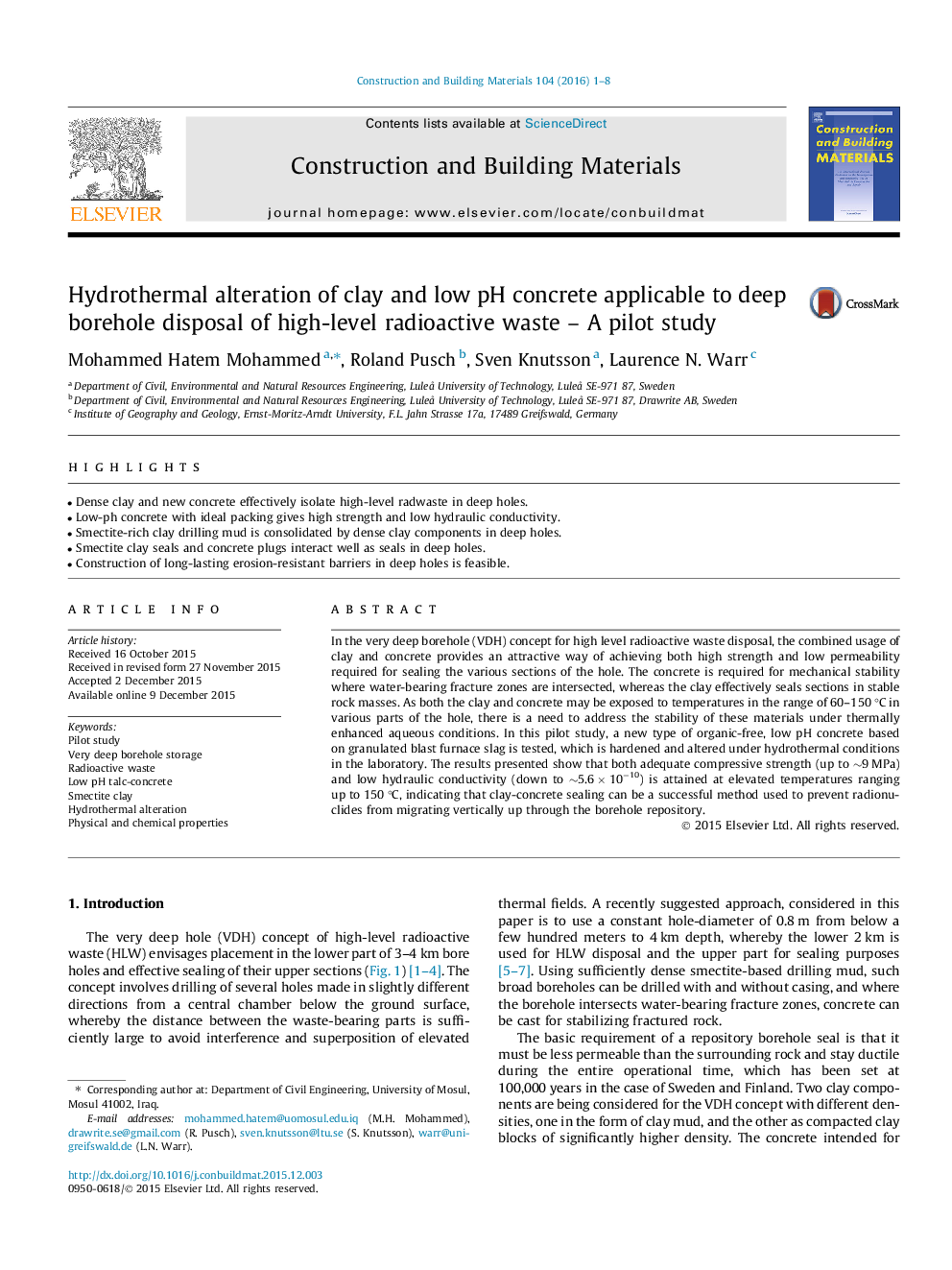| Article ID | Journal | Published Year | Pages | File Type |
|---|---|---|---|---|
| 256292 | Construction and Building Materials | 2016 | 8 Pages |
•Dense clay and new concrete effectively isolate high-level radwaste in deep holes.•Low-ph concrete with ideal packing gives high strength and low hydraulic conductivity.•Smectite-rich clay drilling mud is consolidated by dense clay components in deep holes.•Smectite clay seals and concrete plugs interact well as seals in deep holes.•Construction of long-lasting erosion-resistant barriers in deep holes is feasible.
In the very deep borehole (VDH) concept for high level radioactive waste disposal, the combined usage of clay and concrete provides an attractive way of achieving both high strength and low permeability required for sealing the various sections of the hole. The concrete is required for mechanical stability where water-bearing fracture zones are intersected, whereas the clay effectively seals sections in stable rock masses. As both the clay and concrete may be exposed to temperatures in the range of 60–150 °C in various parts of the hole, there is a need to address the stability of these materials under thermally enhanced aqueous conditions. In this pilot study, a new type of organic-free, low pH concrete based on granulated blast furnace slag is tested, which is hardened and altered under hydrothermal conditions in the laboratory. The results presented show that both adequate compressive strength (up to ∼9 MPa) and low hydraulic conductivity (down to ∼5.6 × 10−10) is attained at elevated temperatures ranging up to 150 °C, indicating that clay-concrete sealing can be a successful method used to prevent radionuclides from migrating vertically up through the borehole repository.
